Search results for: “biomass”
-
Reforestation: costs of CO2 removals?
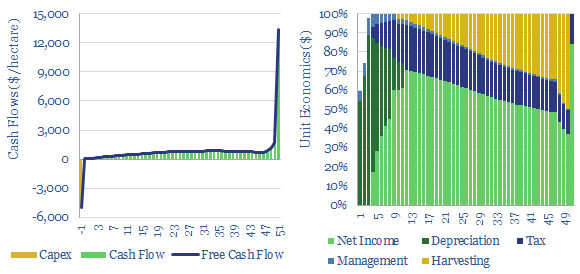
Reforestation costs are modelled in this data-file, acquiring pastureland, planting new forests to absorb CO2, over a 50-year cycle. As a good rule of thumb, we think $50/ton CO2 prices, $50/m3 timber, and 3% pa land appreciation will unlock an 8% unlevered IRR at Yield Class 16 (5 tons of CO2 per acre per year).…
-
Air quality: sulphur, NOx and particulate emissions?
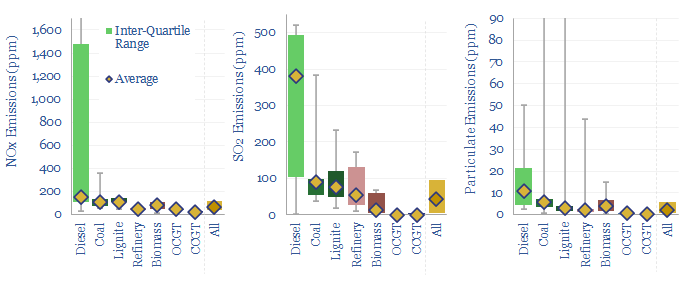
The flue gas of a typical combustion facility contains c7% CO2, 60ppm of NOx, 40ppm of SOx and 2ppm of particulate dusts. This is our conclusion from tabulating data across 75 large combustion facilities, mainly power generation facilities in Europe. However, the range is broad. As a rule of thumb, gas is cleanest, biomass and…
-
Finnish forests: trees, yields, costs, value?
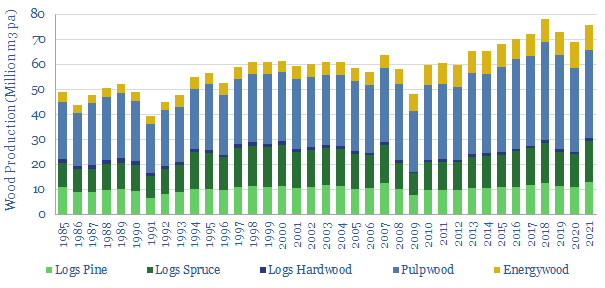
This data-base aggregates data from the Natural Resources Institute of Finland, covering how Finnish forestry produces 75 million m3 of wood per year, while also having accumulated 1bn tons of additional biomass over the past century, while creating €20bn pa of value and employing 60,000 people.
-
Power plants: average capacity?
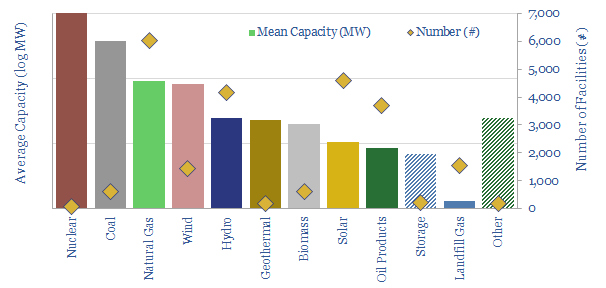
This data-file aggregates granular data into the average capacity of different types of power plants: wind, solar, nuclear, gas, hydro, coal, biomass, landfill gas and geothermal. Energy transition is going to increase the number of inter-connections to the grid by 10-100x.
-
Thermal power plant: loss attribution?
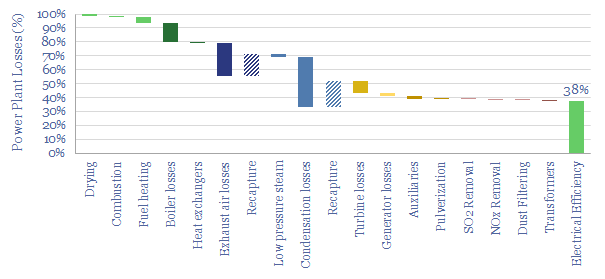
This data-file is a simple loss attribution for a thermal power plant. For example, a typical coal-fired power plant might achieve a primary efficiency of 38%, converting thermal energy in coal into electrical energy. Our loss attribution covers the other 62% using simple physics and industry average data-points.
-
Wildfire suppression companies?
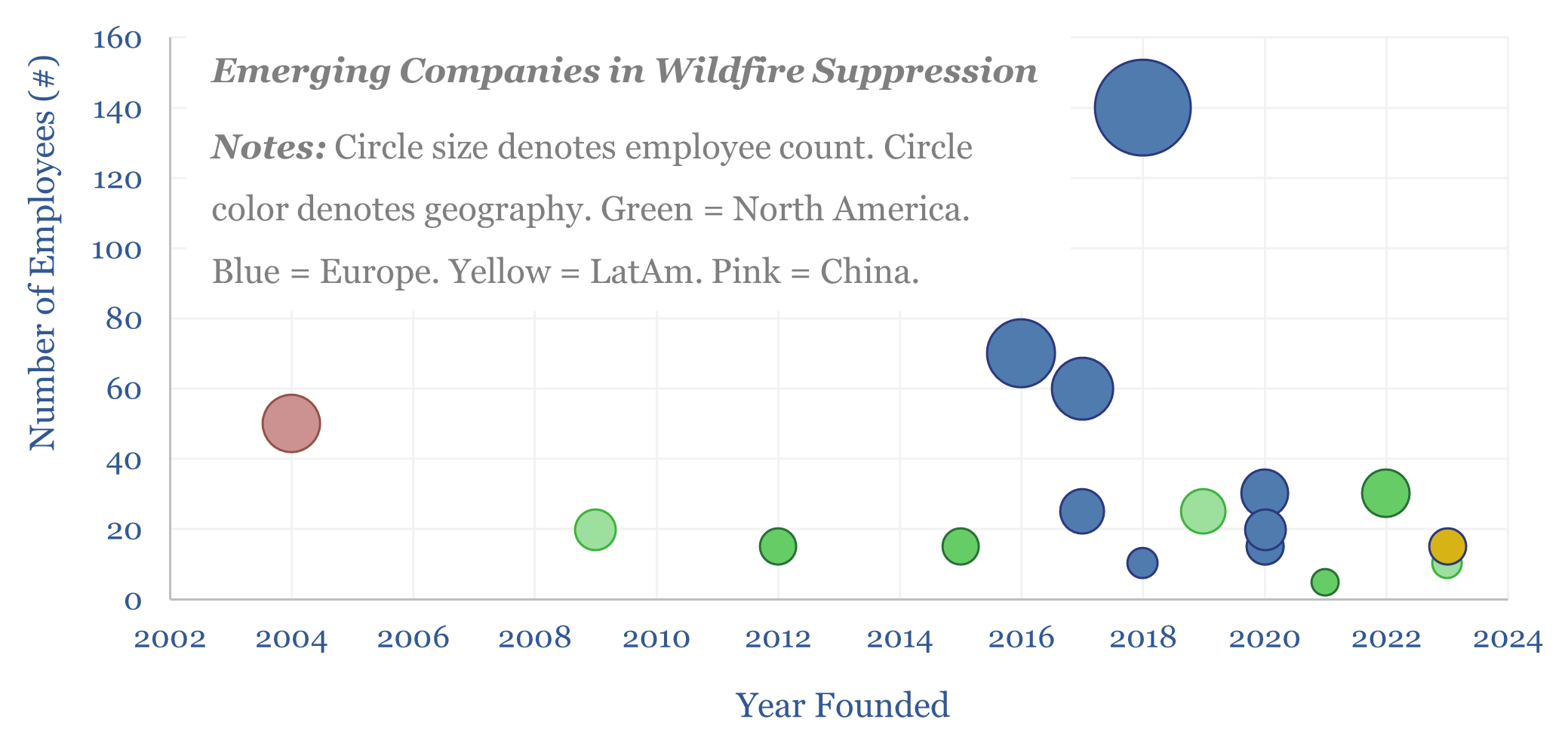
1-2bn acres of land burns globally each year, which could increase by over 35% due to climate change. Hence this data-file screens emerging companies in wildfire suppression, which are focused on preventing, detecting and containing wildfires. The most commonly used methods are drones and AI. Thus adapting to climate change requires more energy not less?
-
Power grids: opportunities in the energy transition?
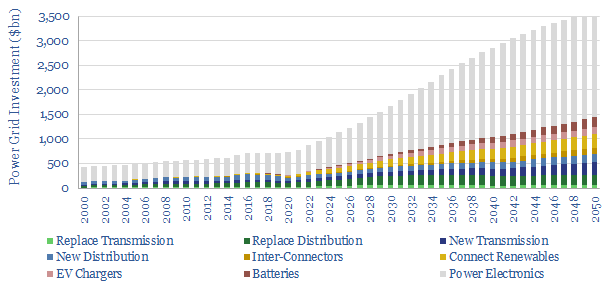
Power grids move electricity from the point of generation to the point of use, while aiming to maximize the power quality, minimize costs and minimize losses. Broadly defined, global power grids and power electronics investment must step up 5x in the energy transition, from a $750bn pa market to over $3.5trn pa. But this theme…
-
Electrostatic precipitator: costs of particulate removal?
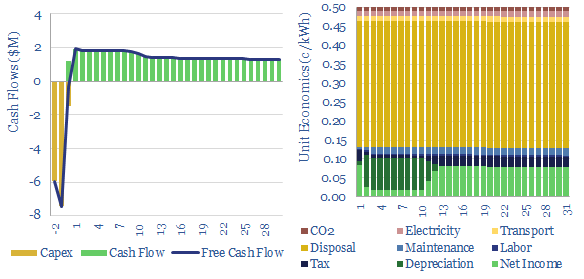
Electrostatic precipitator costs can add 0.5 c/kWh onto coal or biomass-fired electricity prices, in order to remove over 99% of the dusts and particulates from exhaust gases. Electrostatic precipitators cost $50/kWe of up-front capex to install. Energy penalties average 0.2%. These systems are also important upstream of CCS plants.
-
Post-combustion CCS: what energy penalties?
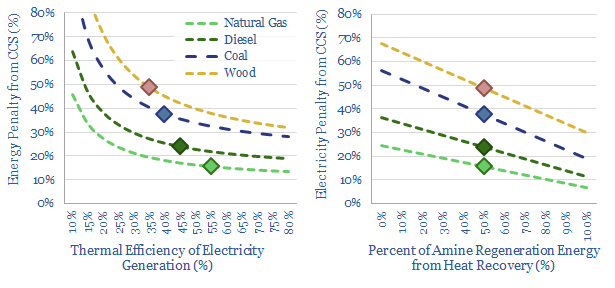
A thermal power plant converts 35-45% of the chemical energy in coal, biomass or pellets into electrical energy. So what happens to the other 55-65%? Accessing this waste heat can mean the difference between 20% and 60% energy penalties for post-combustion CCS. This 10-page note explores how much heat can be recaptured.
-
Residential energy consumption over time?

Global residential energy demand runs at 2.5 MWH pp pa, of which c40% is from electricity, 40% is gas, c13% is biomass and c7% is oil. In our gas and power models, electrification rises to 65% by 2050, to help renewables reach 50% of global electricity. Heat pumps improve efficiency and lower primary demand in the developed world.
Content by Category
- Batteries (89)
- Biofuels (44)
- Carbon Intensity (49)
- CCS (63)
- CO2 Removals (9)
- Coal (38)
- Company Diligence (94)
- Data Models (838)
- Decarbonization (160)
- Demand (110)
- Digital (59)
- Downstream (44)
- Economic Model (204)
- Energy Efficiency (75)
- Hydrogen (63)
- Industry Data (279)
- LNG (48)
- Materials (82)
- Metals (80)
- Midstream (43)
- Natural Gas (148)
- Nature (76)
- Nuclear (23)
- Oil (164)
- Patents (38)
- Plastics (44)
- Power Grids (130)
- Renewables (149)
- Screen (117)
- Semiconductors (32)
- Shale (51)
- Solar (68)
- Supply-Demand (45)
- Vehicles (90)
- Wind (44)
- Written Research (354)